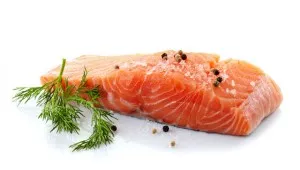Essential fatty acids are just as they sound – fats that are necessary for the human body. Although many people still associate the word “fat” with poor health, essential fatty acids are a must for survival.
Without them, serious damage can result in a number of systems within the body. They’re particularly important for the growth and development of infants and young children.
Two of the most important essential fatty acids are linoleic acid, which is the principal precursor of omega-6 fatty acids which play a role in pro-inflammatory reactions, like blood clots or an allergic reaction, and linolenic acid, the precursor of omega-3 fatty acid necessary for growth and development.
Omega-6 essential fatty acids play a part in helping the body heal from a variety of conditions including skin diseases and arthritis as well as fighting cancer cells. Although they’re considered pro-inflammatory, they’re still needed for optimal body functioning, including maintaining integrity of cell membranes, kidney function, healthy skin, and fighting off viruses and bacteria.
The problem with omega-6 fatty acids is that while most people get plenty in their diet, by consuming foods that are high in sugar and trans fats, the metabolic effects tend to lower omega-6 levels in the body, ultimately doing more harm then good.
Omega-3 essential acids serve a variety of purposes, including helping the organs to function properly and aiding cell activity within the body. They help cell walls to form, and aid in circulating oxygen, in addition to working with red blood cells to keep them functioning properly.
A lack of Omega-3 is more common and can lead to memory problems, blood clots, irregular heartbeat and an impaired immune system.
Both omega-6 and omega-3 are essential for health, but the key is to ensure the ratio between these doesn’t get out of balance. A ratio of between 5:1 to 10:1 between omega-6 and omega-3 is considered optimal.
The problem is some foods are extremely high omega-6 and extremely low omega-3, like safflower oil, which is 77:0, or sunflower oil, which is 69:1. When the ratio is out of balance the body becomes predisposed to free radical mediated cell injury, weakened immune function, decreased glucose tolerance and increased risk of diabetes as well as increased blood clot formations that can result in coronary heart disease and stroke.
Most people eat way too many omega-6 fatty acids and not enough omega-3 fatty acids. Part of the problem is the high consumption of vegetable oils that are high in omega-6.
One of the best things you can do to reduce your intake of omega-6 is to avoid processed seed and vegetable oils as well as the processed and fast foods that contain them. These types of so-called ‘foods’ were only introduced into the human diet in the past century and have completely distorted the natural balance of essential fatty acids.
Coconut oil, olive oil and butter are relatively low in omega-6. Sunflower oil, corn oil, soybean oil and cottonseed oil are very high in omega-6 and should be avoided completely.

Studies have shown that maintaining an ideal omega-6/omega-3 ratio is one of the best ways to reduce the risk of a wide range of chronic diseases that are prevalent in Western societies. If you hope to achieve optimal health and well-being, it’s really a must.
-The Alternative Daily
Sources:
http://www.ncbi.nlm.nih.gov/pubmed/12442909
http://authoritynutrition.com/optimize-omega-6-omega-3-ratio
http://www.nutrition-and-you.com/essential-fatty-acids.html
